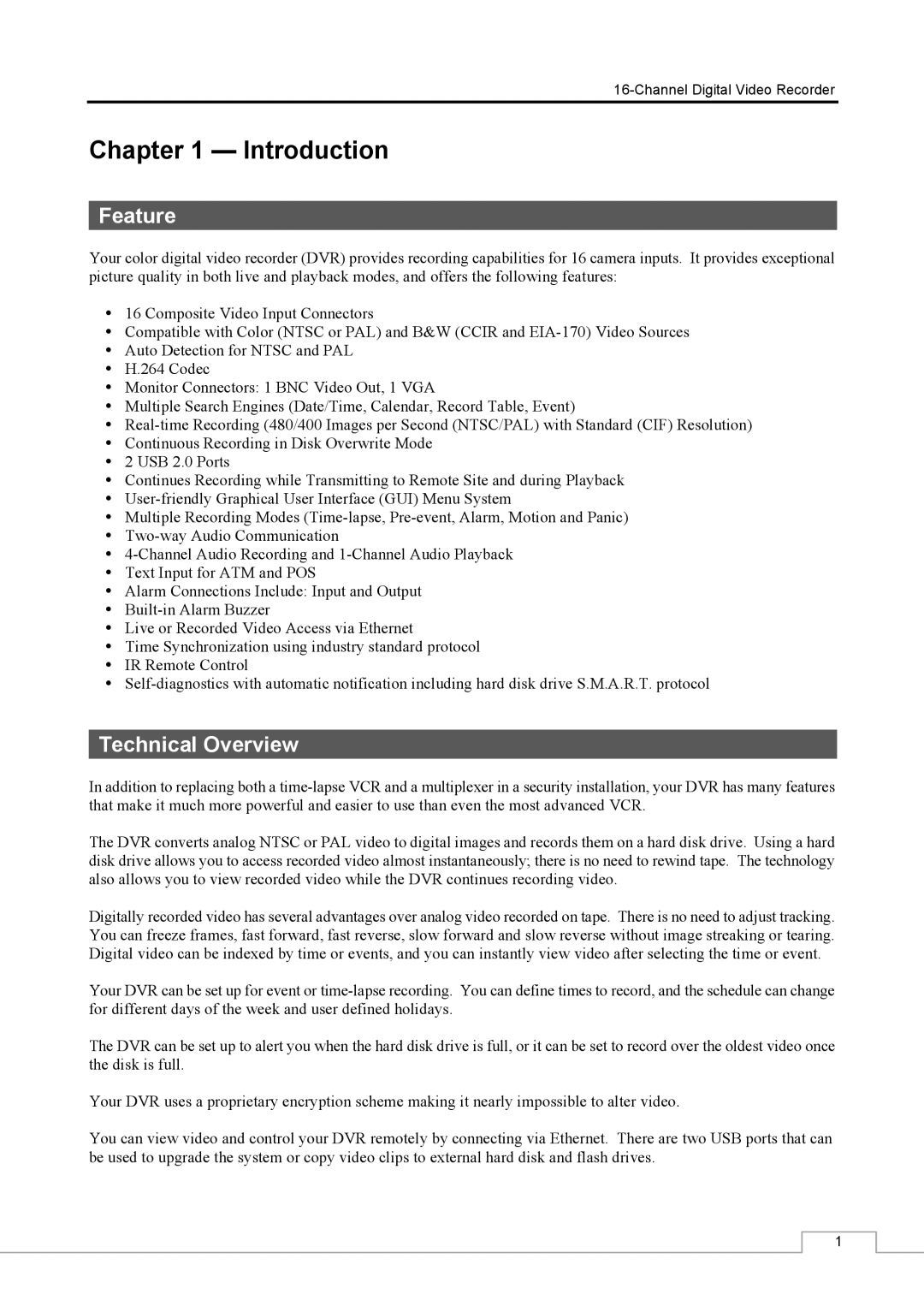
Chapter 1 — Introduction
Feature
Your color digital video recorder (DVR) provides recording capabilities for 16 camera inputs. It provides exceptional picture quality in both live and playback modes, and offers the following features:
16 Composite Video Input Connectors
Compatible with Color (NTSC or PAL) and B&W (CCIR and
Auto Detection for NTSC and PAL
H.264 Codec
Monitor Connectors: 1 BNC Video Out, 1 VGA
Multiple Search Engines (Date/Time, Calendar, Record Table, Event)
Continuous Recording in Disk Overwrite Mode
2 USB 2.0 Ports
Continues Recording while Transmitting to Remote Site and during Playback
Multiple Recording Modes
Text Input for ATM and POS
Alarm Connections Include: Input and Output
Live or Recorded Video Access via Ethernet
Time Synchronization using industry standard protocol
IR Remote Control
Technical Overview
In addition to replacing both a
The DVR converts analog NTSC or PAL video to digital images and records them on a hard disk drive. Using a hard disk drive allows you to access recorded video almost instantaneously; there is no need to rewind tape. The technology also allows you to view recorded video while the DVR continues recording video.
Digitally recorded video has several advantages over analog video recorded on tape. There is no need to adjust tracking. You can freeze frames, fast forward, fast reverse, slow forward and slow reverse without image streaking or tearing. Digital video can be indexed by time or events, and you can instantly view video after selecting the time or event.
Your DVR can be set up for event or
The DVR can be set up to alert you when the hard disk drive is full, or it can be set to record over the oldest video once the disk is full.
Your DVR uses a proprietary encryption scheme making it nearly impossible to alter video.
You can view video and control your DVR remotely by connecting via Ethernet. There are two USB ports that can be used to upgrade the system or copy video clips to external hard disk and flash drives.
1
